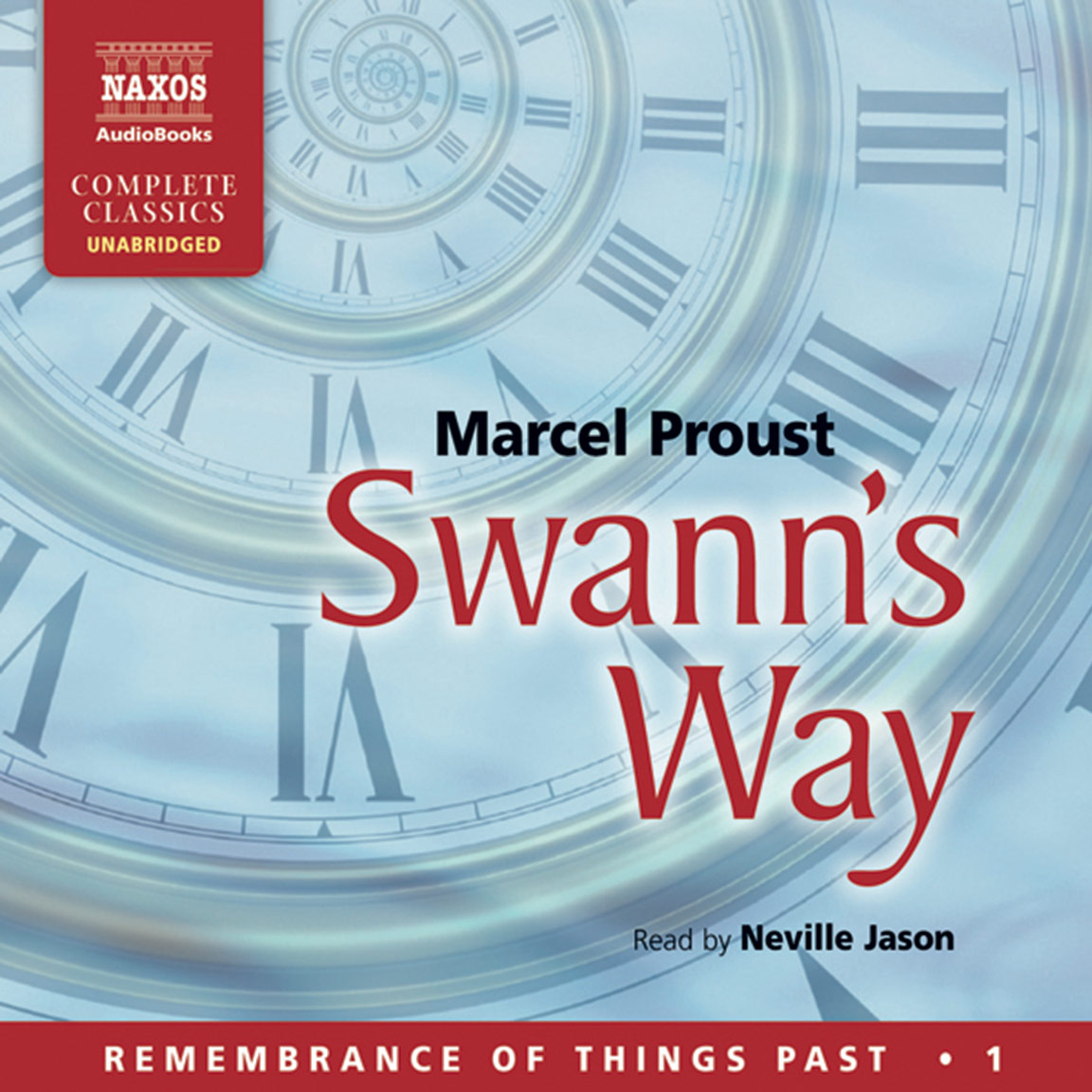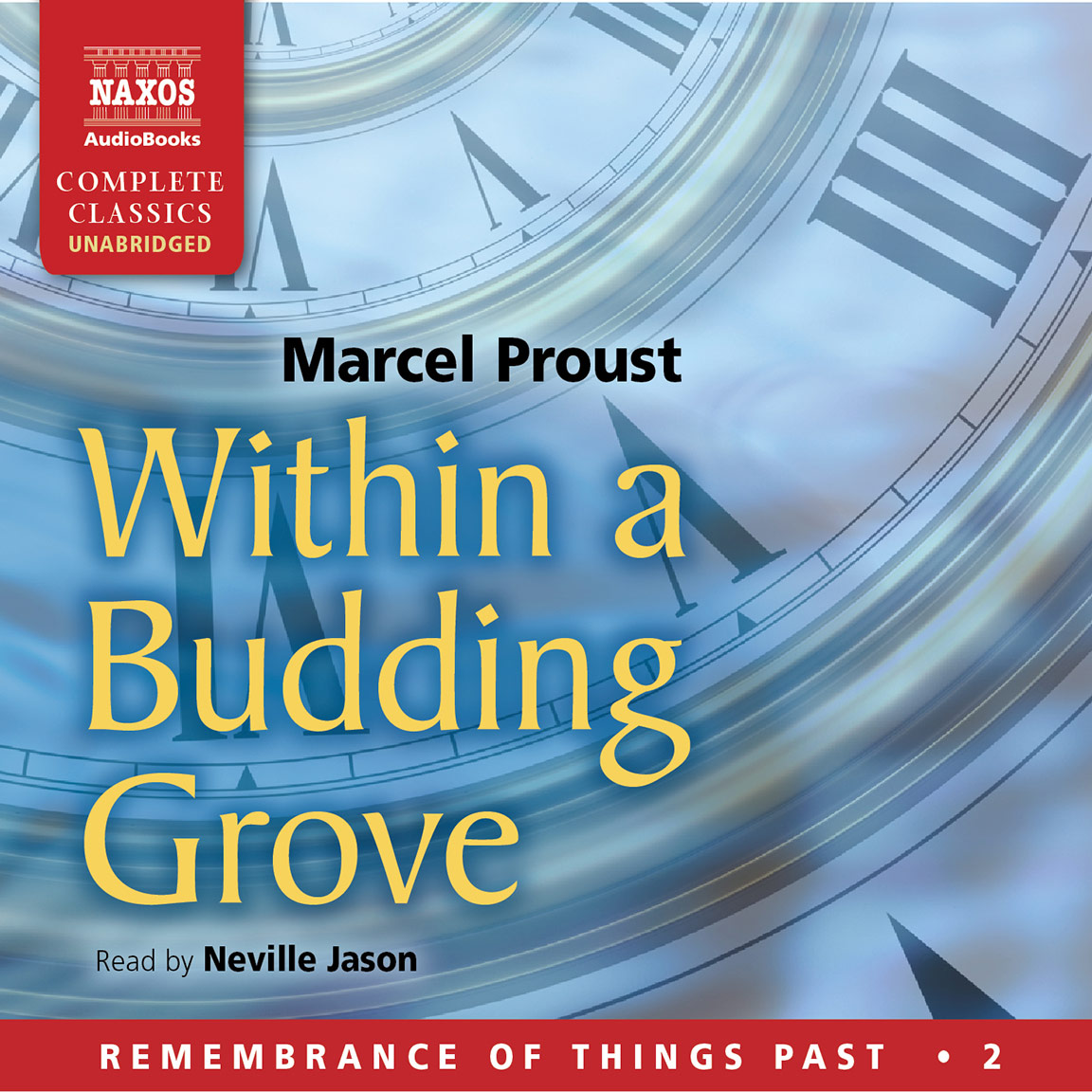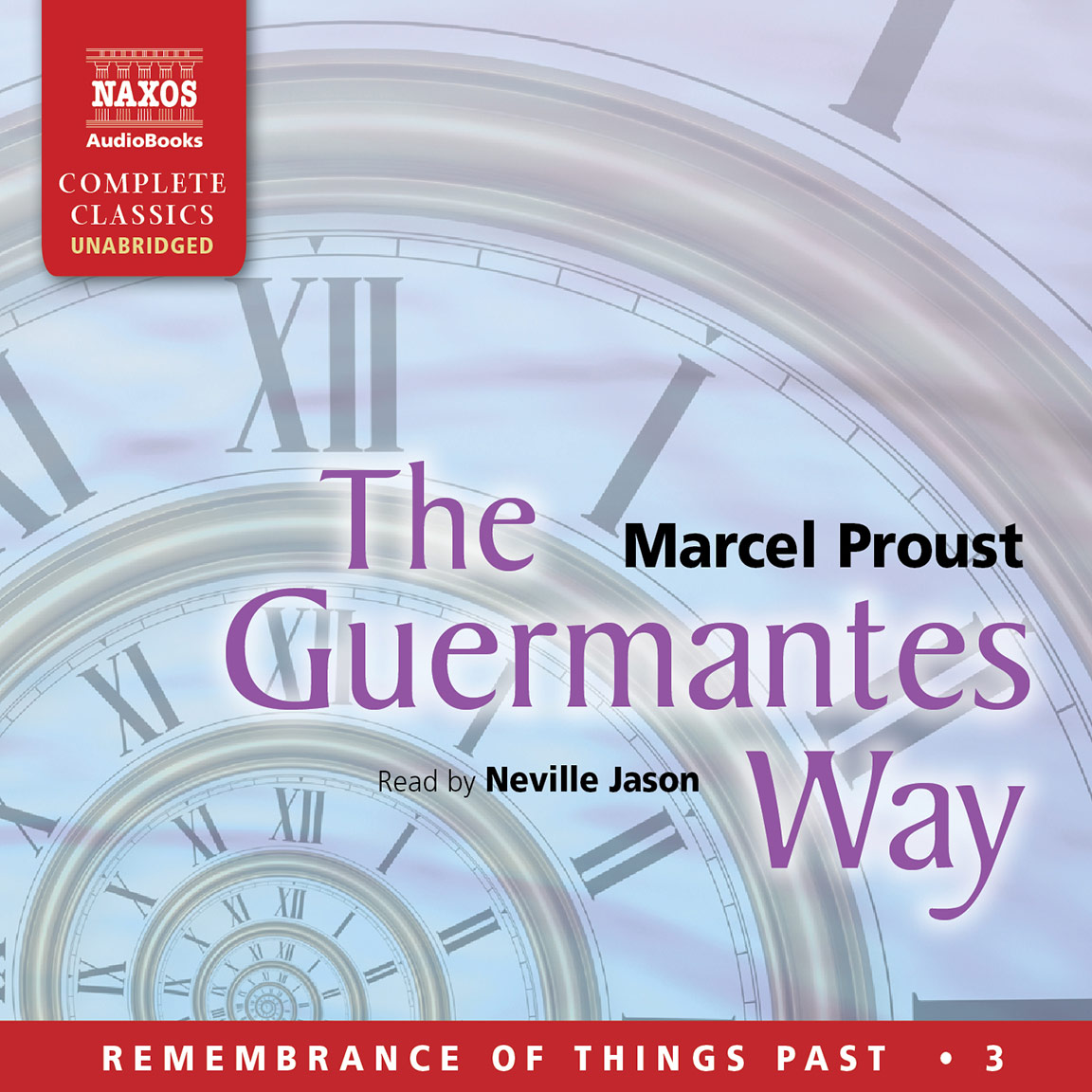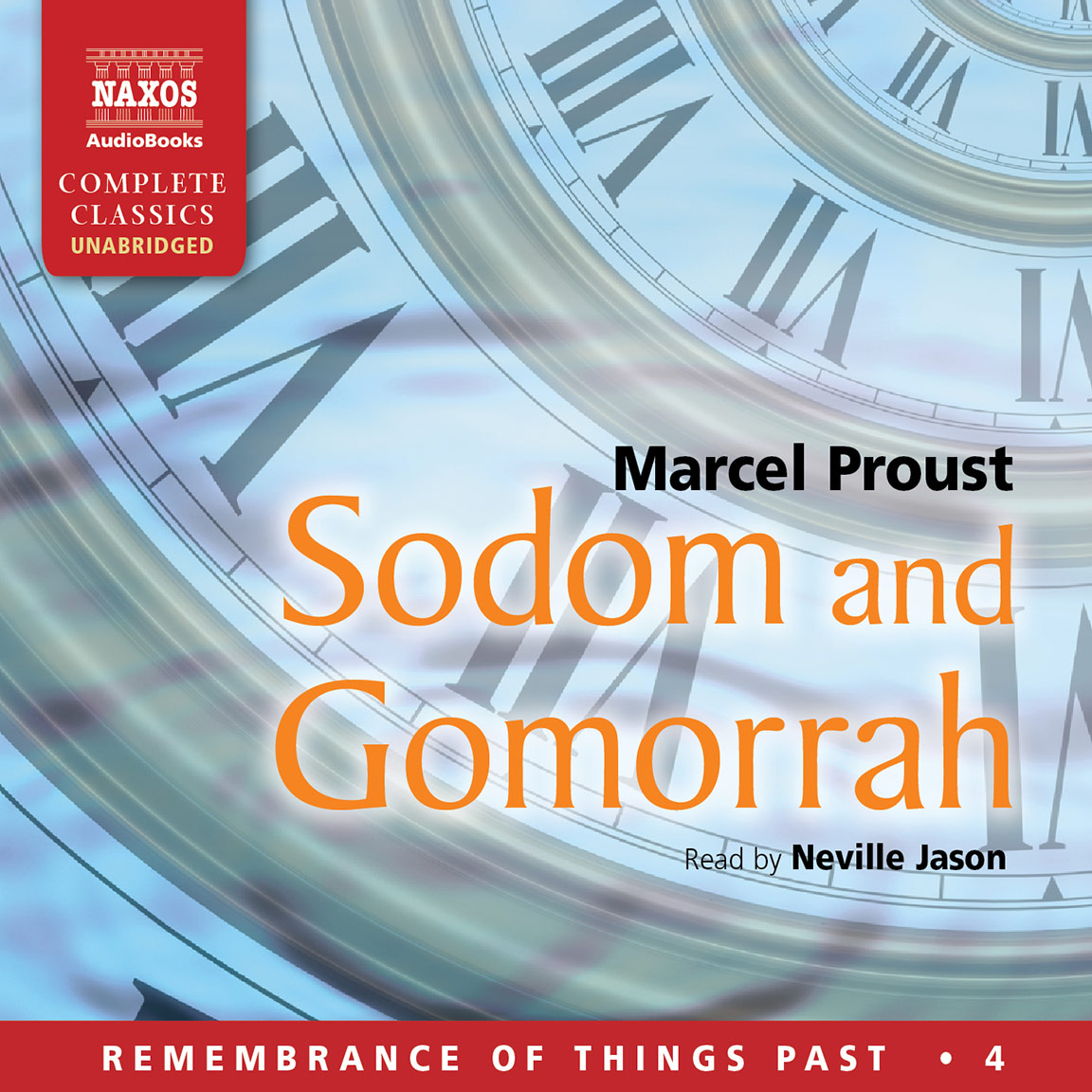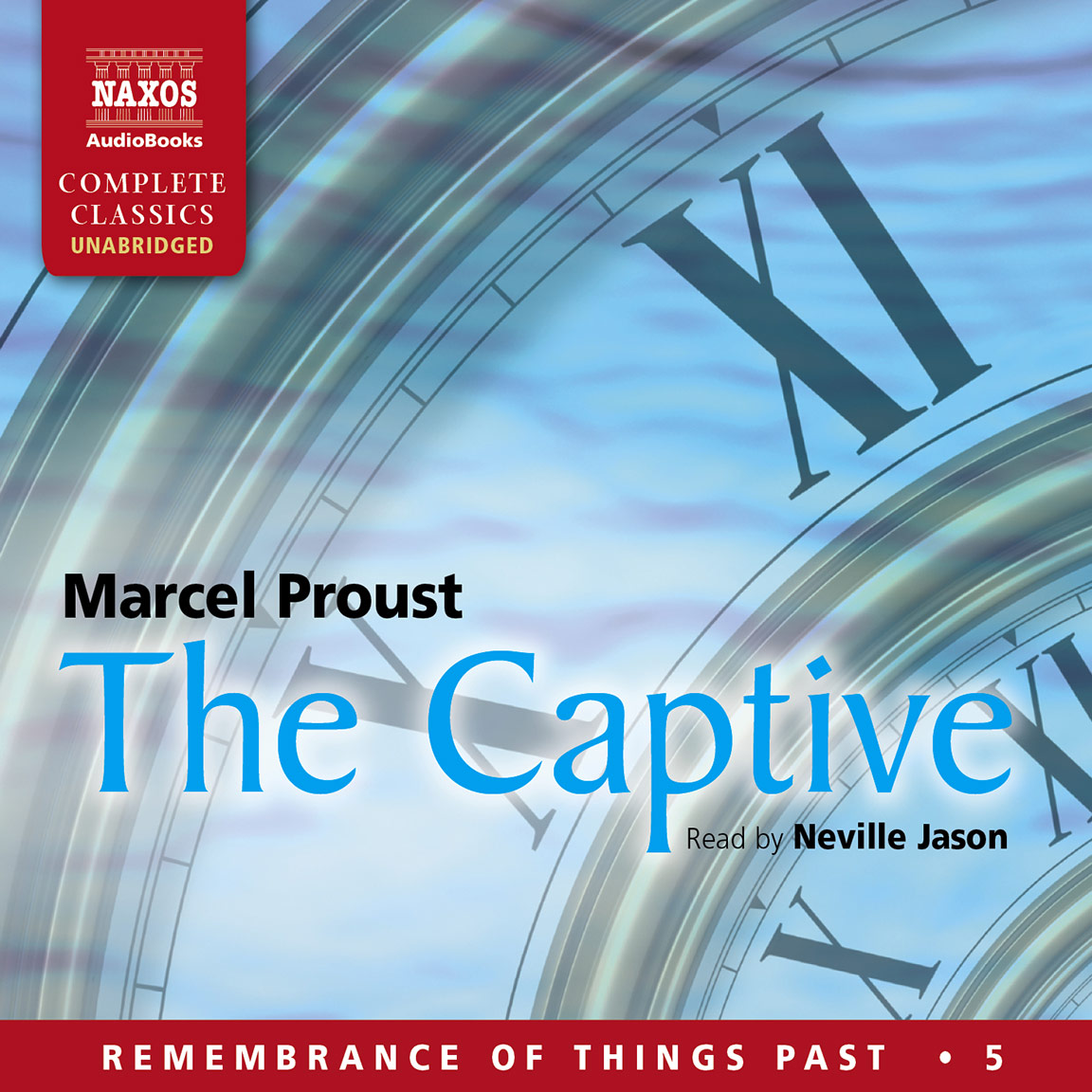
Audio Sample
Marcel Proust
The Fugitive
Read by Neville Jason
unabridged
Remembrance of Things Past is one of the monuments of 20th-century literature. Neville Jason’s unabridged recording of the work runs to 150 hours. The Fugitive is the sixth of seven volumes. The Narrator’s obsessive feelings of possession for Albertine have forced her to flee. It comes as a terrible shock and is followed by further destabilising news about other friends. Based on the translation by C. K. Scott Moncrieff.
-
Running Time: 13 h 22 m
More product details
Digital ISBN: 978-1-84379-615-2 Cat. no.: NA0100 Download size: 390 MB Translated by: C. K. Scott Moncrieff BISAC: FIC004000 Released: October 2012 -
Listen to this title at Audible.com↗Listen to this title at the Naxos Spoken Word Library↗
Due to copyright, this title is not currently available in your region.
You May Also Enjoy
Booklet Notes
The critic André Maurois described Proust’s Remembrance of Things Past as ‘one of the greatest works of the imagination of all time’.
The literal translation of the work’s French title, ‘In Search of Lost Time’, contains within it a clue to the creation of this monumental work of biographical fiction. Having wasted time living a dilettante existence in the fashionable world, Proust, in middle age, decided to re-dedicate his life to art, and to attempt at last to achieve the great work of which he knew himself capable.
Remembrance of Things Past was his chance to justify his life, and to cheat death through an act of artistic creation. It was the means he would use to conquer time through recreating his lost years. Memory was the material with which he would weave the magic cord to be launched into infinity; that cord which now binds us to him, and stretches forward into the future, linking his genius to unborn generations.
The Author
Marcel Proust was born on 10 July, 1871. His father, a distinguished professor of medicine, was from a Catholic family, while his mother was Jewish. Although convinced from an early age of his calling as a writer, Proust was riddled with self-doubt and wrote relatively little at the beginning of his career.
During his twenties, he co-founded a short-lived review, Le Banquet; contributed to another literary publication, La Revue Blanche; and in 1896 had his first book published, a collection of essays entitled Les Plaisirs et Les Jours.
He became an enthusiastic admirer of Ruskin and translated his Bible of Amiens and Sesame and Lilies into French. A novel, Jean Santeuil, which was the precursor of Remembrance of Things Past, was abandoned, and eventually published long after Proust’s death, in 1954.
For much of his youth Proust led the life of a man-about-town, frequenting fashionable Paris drawing rooms and literary salons, which were to form the background of a number of his early stories and sketches, and subsequently of Remembrance of Things Past.
The death of his adored mother in 1905 resulted in a nervous collapse and aggravated his chronic asthma and insomnia. But, despite his grief and the sense of loss, from which he never recovered, his mother’s death freed him with regard to his homosexual way of life, and allowed him to address same-sex love in his writing, albeit in a form which treated such experiences as happening to others rather than to himself.
In 1907 he moved into an apartment in the Boulevard Haussmann where, in the bedroom which he had had lined with cork to keep out noise, he embarked upon his great work À la Recherche du Temps Perdu (Remembrance of Things Past). In it the minuteness of his observation, the depth of his psychological understanding, and the vividness of his descriptive powers combined to create one of the most poetic and magical works in all literature.
Publication of Remembrance of Things Past
This long autobiographical cycle was originally published in eight sections: Du Côté de Chez Swann (Swann’s Way) in 1913; A L’Ombre des Jeunes Filles en Fleurs (Within a Budding Grove) in 1918; Le Côté de Guermantes I (The Guermantes Way I) in 1920; Le Côté de Guermantes II and Sodom et Gomorrhe I (Cities of the Plain I) in 1921; Sodom et Gomorrhe II in 1922; La Prisonnière (The Captive) in 1923; Albertine Disparue (The Sweet Cheat Gone/The Fugitive) in 1925 and Le Temps Retrouvé (Time Regained) in 1927.
Proust was obliged to publish Swann’s Way at his own expense, and even after it had appeared, had trouble finding a publisher for the next part, A L’Ombre des Jeunes Filles en Fleurs. However, when it appeared in 1918 it received considerable acclaim, and was awarded the Prix Goncourt the following year.
By the time Proust died, on 18 November, 1922, the first four parts of the cycle had been published, leaving the others to appear posthumously.
The Fugitive
The Fugitive opens with Marcel astonished at the intensity of his mental agony following Albertine’s sudden departure. ‘How little we know ourselves,’ he observes, having never dreamed how desperately he needed Albertine for his peace of mind and happiness.
Unlike more conventional novels, Remembrance of Things Past does not depend on its narrative to ensure the continuation of the reader’s interest. Events themselves are less compelling than the poetic descriptions and philosophical observations to which they give rise. That said, The Fugitive contains one of the most unexpected and shocking occurrences in the novel: the death of Albertine. But even here, the accident itself happens offstage in the manner of a Greek tragedy, and it is the author’s penetrating observations on the process of grief and mourning which result from that event, that provide the major content of the book.
From the moment Françoise announces ‘Mademoiselle Albertine has gone!’, we follow the development of the Narrator’s emotional states: his initial shock, his astonishment at the power of his feelings, the realisation of how much he has depended on Albertine’s presence and how he has avoided acknowledging the signs of her unhappiness and frustration. He lets us see his attempts at self-deception, the ‘double-think’ which enables him to bear his pain. And at each stage that pain becomes more unbearable: first when he realises Albertine has gone, next when he accepts that she may not come back, and finally when he knows that death has prevented her from returning ever again. And even when she is dead his jealousy persists, and he continues to torture himself by seeking to discover explicit details of her sexual adventures.
Proust’s deep understanding of the human soul and his ability to describe his own thoughts and feelings with unparalleled truthfulness and courage enable us to recognise the universality of his experience. His insightful analysis of his inner world and his ability to speak without equivocation, to show himself at his most vulnerable, touches us deeply.
But despite Proust’s literary honesty, the social climate in which he lived forced certain restrictions on him. Society demanded that any lifestyle, especially homosexuality, which deviated from what was considered acceptable, had to be discreet and hidden from view. The fate of Oscar Wilde loomed as a warning to those who ignored the rules. Proust was not one to flout society. On the contrary, in his youth he had made strenuous efforts to be accepted in the right circles. It was not until after the death of his mother that he was able to indulge his homosexual tendencies, although even then he was never able to live openly as a homosexual.
Proust remarked that as a writer one can say anything providing one does not say ‘I’, and although Remembrance of Things Past is written in the first person, Proust contrived to remain incognito. He denied publicly that the Narrator was intended to be himself (he writes of ‘the “I” who is not “I”’, although at one point he teasingly suggests that we call the Narrator ‘Marcel’) and the Narrator’s two great loves, Albertine and Gilberte, are women, although their originals have been identified as male. The device of attributing homosexuality to other characters enabled him to discuss the subject freely without implicating himself.
Proust repudiated accusations by his friends that he had portrayed them, insisting that each character is based not on one, but on many originals. However, it is clear that some characters are modelled more closely than others on a single person. It is generally accepted that the main original of Albertine, by sexual transposition, was a young Monegasque, Alfred Agostinelli, who worked initially as Proust’s chauffeur and later as his secretary.
Although over time there were several young men engaged by Proust in the capacity of secretary, who lived in his apartment and became ‘Captives’ as a result of his possessive nature, it was Agostinelli whose tragic death in a plane crash, so closely echoed in Albertine’s riding accident, resulted in the deep grief Proust describes so movingly.
In correspondence, Proust referred to Agostinelli as ‘an extraordinary being’, adding, ‘I don’t know how I can endure such grief.’ Proust used the events of his life more directly than many authors as raw material for his work, and it was Agostinelli’s death which was to inspire him to create out of his suffering the enduring monument which is
The Fugitive.
The Life and Work of Marcel Proust
To avoid any confusion, it may be helpful to point out that Proust’s great work, À La Recherche du Temps Perdu, was originally translated into English by Charles K. Scott-Moncrieff and published in 1922 under the title, Remembrance of Things Past. It was subsequently re-translated by Terence Kilmartin and appeared in 1981 as In Search of Lost Time. In 2002 a new edition appeared under the same title, with each volume assigned to a different translator. The Naxos AudioBooks recordings use the Scott-Moncrieff text and, in references to the work, I use Scott-Moncrieff’s title.
My own contact with Proust began when, as a 17-year-old schoolboy, I first read Swann’s Way. I could not have guessed then that, many years into the future, Proust would take over my life to such an extent. Over a six year period during the 1990s, I abridged and recorded Remembrance of Things Past for Naxos Audiobooks, for whom I have now recorded this entire, uncut text.
When I was asked to write The Life and Work of Marcel Proust (see www.naxosaudiobooks.com), it occurred to me that, although the people on whom Proust based his characters were no longer living, the places he wrote about were still there, and so I travelled to France to see them.
I was delighted to discover that Illiers, where Marcel Proust spent his holidays as a child, and which figures in the book as Combray, is now marked on maps and road signs as Illiers-Combray, in official recognition of the reason for this sleepy village’s wider fame.
In a narrow street just off the market square in Illiers-Combray is the house in which Proust’s father, Adrien Proust, was born, and further along is the house of his aunt Élisabeth, now a Proust museum, where Élisabeth’s fictional counterpart, the bedridden Aunt Léonie, watched the world go by from her bedroom window. Around the corner from the house is a little boulangerie with a sign in the window announcing proudly: ‘This is where Aunt Léonie bought her madeleines’. It only occurs to me as I buy a packet of the scallop-shaped cakes, that Aunt Léonie is a creature of fiction. Never mind, Aunt Élisabeth might well have patronised the establishment, or one very like it. Up the hill there is a real house called Tansonville, the name of the house occupied by Charles Swann, and later by his daughter Gilberte and her husband Robert de Saint-Loup, and further on there is a real village called Méréglise, a name almost identical to the fictional Méséglise.
Water lilies are still reflected in the glassy surface of the river Loir, which in the book bears the more poetic name the Vivonne, and beyond the stream lies the Pré Catalan, the enchanting park created by Proust’s horticulturally minded Uncle Jules. From Illiers I travelled on to Cabourg, a seaside resort on the Normandy coast, the original of the fictional Balbec. Here I found the Grand Hotel in all its Edwardian splendour. It was rebuilt after Proust spent holidays there as a child, but he returned as an adult, and sections of Remembrance of Things Past were written beneath its roof. As in Within a Budding Grove, the great glass windows of the restaurant look out over the promenade to the beach below, and with a little imagination, that group of budding young girls in bikinis is transformed into the little band of ‘jeunes filles en fleurs’ outlined against the sea.
I travelled on to Paris, visiting 102 Boulevard Haussmann, Proust’s home for many years, where he wrote so much of Remembrance of Things Past. The building is still owned by the same bank that purchased it from Proust’s aunt, when her inconsiderate decision to sell it forced him to move. His bedroom is still there, but unfurnished, and to see the room as it was, one is obliged to visit the Musée Carnavalet, where his bed, chaise-longue and other effects are displayed in a reconstruction of the famous cork-lined room.
A walk to the gardens of the Champs Élysées brought me to an area with a sign announcing that I am in the Allée Marcel Proust. Children chase each other – perhaps playing the modern equivalent of ‘prisoners base’, the game played by Gilberte and her friends. This is where the real Marcel played as a child with the real Marie de Benardaky, with whom he fell in love, just as the fictional Marcel falls in love with the fictional Gilberte Swann.
In the real world the same spaces are occupied now by different people. Time has moved on, but places remain, and we have the privilege of being present in not only the imaginary world Proust created, but that portion of the real world which had a part in its creation. His presence has left behind a trace of magic, and we see places differently, because we see them through his eyes. One day those places will have crumbled into dust, as will we ourselves, and the space we now consider ours will be occupied by others. But as long as civilisation remains, those who come after us will be able to share Proust’s vision and enter his world. Proust was aware that art is the only true reality and that through his creations the artist continues to live after his death, beyond space and beyond time.
Notes by Neville Jason
A Proust Chronology
1871, July 10 – Marcel Proust born
1873, May 24 – Robert Proust born
1878–1886 – holiday visits to Illiers (now Illiers-Combray)
1880, spring – Marcel’s first attack of asthma
1882–1888 – attends the Lycée Condorcet
1888 – contributed to La Revue Lilas and La Revue Verte
1889–1890 – military service at Orléans
1890, January 3 – death of maternal grandmother, Adèle Weil
1890, August – holiday at Cabourg
1890, November – enrols as a student in the Faculty of Law and at the Ecole Libre des Sciences Politiques
1890, November – 1891, September – contributes to Le Mensuel
1892, March – first edition of Le Banquet
1893, March – last edition of Le Banquet
1893, April 13 – meets Comte Robert de Montesquiou-Fezensac
1893 – contributes to La Revue Blanche; degree in law
1894, May 22 – meets Reynaldo Hahn
1894, December – trial of Captain Alfred Dreyfus
1895, March – degree in philosophy
1895, summer – holiday in Brittany with Reynaldo Hahn
1896 – publication of Les Plaisirs et Les Jours; writing Jean Santeuil
1897, February 6 – duel with Jean Lorrain
1898, January 13 – Emile Zola’s article J’Accuse published
1899 – begins translation of Ruskin’s Our Fathers Have Told Us (La Bible d’Amiens)
1899, summer – holiday at Evian-les-Bains, visits the Brancovan family at Amphion
1900, June and October – visits Venice
1902 – abandons work on Jean Santeuil
1903, November 26 – death of Adrien Proust
1904 – publication of La Bible d’Amiens
1905, September 26 – death of Jeanne Proust
1906, June – publication of Sesame and Lilies (Sésame et les Lys)
1906, July – Dreyfus declared innocent
1906, December – moves to 102 Boulevard Haussmann
1907, summer – holiday at Cabourg, where he will spend the next seven summers. Meets Alfred Agostinelli
1908–09 – begins writing À la Recherche du Temps Perdu
1913 – Agostinelli re-enters Proust’s life. Employs Celeste Albaret
1913, November – Du Côté de Chez Swann (Swann’s Way) published
1914, May 30 – Alfred Agostinelli dies in an aircraft accident
1918, June – publication of A L’Ombre des Jeunes Filles en Fleurs (Within a Budding Grove), Pastiches et Melanges and new edition of Swann’s Way
1919, June – moves to 8, rue Laurent-Pichat
1919, December – Within a Budding Grove awarded the Prix Goncourt
1920, October – moves to 44, rue Hamelin
1920, October – Le Côté de Guermantes I (The Guermantes Way I) published
1920, April – Le Côté de Guermantes II and Sodom et Gomorrhe I (Cities of the Plain I) published
1921, December 11 – death of Montesquiou
1922, April – Sodom et Gomorrhe II published
1922, October – awarded the Légion d’Honneur
1922, November 18 – death of Marcel Proust
1923 – La Prisonnière (The Captive) published
1925 – Albertine Disparue (The Fugitive/The Sweet Cheat Gone) published
1952 – Jean Santeuil published
1954 – Contre Sainte-Beuve (Against Sainte-Beuve) published

